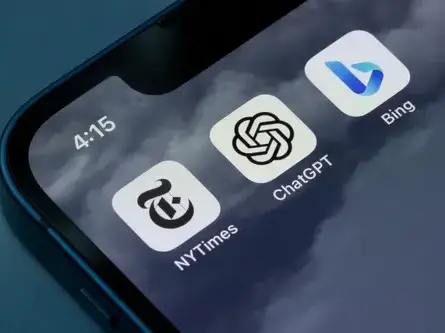
Millions of stories published by sites including The New York Times and The New York Daily News have been found in three weeks of searching OpenAI’s training dataset.
The news publishers are currently trawling through data to find instances of their copyrighted work being used to train OpenAI’s models – but they say the tech company should be forced to provide the information itself.
They are now asking for a court order requiring OpenAI to “identify and admit” which of their copyrighted content was used to train each of its large language models between GPT-1 and GPT-4o.
According to the ChatGPT creator, which objected to the request, the publishers have asked for information about almost 20 million pieces of content mentioned in the case, “effectively resulting in almost 500 million requests”.
The publishers told the court on Friday that their requests to the AI company for help with inspecting the data “would be significantly reduced if OpenAI admitted that they trained their models on all, or the vast majority, of News Plaintiffs’ copyrighted content”.
A letter to the court also stated: “While they have already found millions of News Plaintiffs’ works in the training datasets, they do not know how many more works are yet to be uncovered – information that OpenAI, as the party that chose to copy these works, should be ordered to provide.”
The New York Times was the first major news publisher to file a copyright case against OpenAI and its partner Microsoft in December last year.
The New York Daily News and seven sister publications, all owned by Alden Global Capital, followed suit in April and the two cases have since been combined after OpenAI and Microsoft argued they “involve nearly identical allegations relating to the same new technology”.
In the new letter, the news publishers argued that identifying which of their copyrighted work was taken and used to train the GPT models is “foundational to these cases and informs the scope” of their claims.
“But News Plaintiffs and OpenAI have a fundamental disagreement about who is responsible for identifying this information.”
The publishers said they have served numerous requests since February for information about what’s in OpenAI’s training datasets, to which the tech company replied: “OpenAI will make available for inspection, pursuant to an inspection protocol to be negotiated between the parties, the pretraining data for models used for ChatGPT that it locates after a reasonable search.”
After long-running negotiations, since last month the news publishers have been inspecting OpenAI’s training data under strict conditions, previously described by the court as a “sandbox” (meaning a highly controlled environment in which only certain applications can be run).
But the news publishers said they initially faced “severe and repeated technical issues” stopping them from being able to “effectively and efficiently” carry out the search and “ascertain the full scope of OpenAI’s infringement”.
They complained that the process is “time-consuming, burdensome, and hugely expensive” and said they had spent the equivalent of 27 days via lawyers and experts in the OpenAI sandbox but were “nowhere near done”.
The New York Times Company results published on Monday revealed it has so far spent at least $7.6m on the case against OpenAI and Microsoft.
OpenAI: Training data searches are ‘uncharted waters’
OpenAI responded within the same letter that the publishers’ complaints about the inspection have either been resolved or are being actively discussed. It blamed the issues on consultants for the publishers “overwhelming the file system with malformed searches”.
OpenAI added: “Taking a step back, everyone agrees the parties are navigating uncharted waters with training-data discovery.
“There are no precedents for such discovery, where Plaintiffs seek access to several hundred terabytes of unstructured textual data. OpenAI cannot easily identify the specific content that Plaintiffs are interested in, so it did exactly what Rule 34 allows: it invited Plaintiffs to inspect the data as it is kept in the ordinary course. There is no ‘sandbox’. Rather, because the data is far too voluminous to produce, OpenAI built the hardware and software that Plaintiffs need to inspect.
“Specifically, OpenAI organised hundreds of terabytes of training data in an object-storage file system for Plaintiffs’ exclusive use; it built an enterprise-grade virtual machine with the computing power to access, search, and analyse the datasets; it installed hundreds of software tools and tens of gigabytes of Plaintiffs’ data upon their request; and it managed the necessary firewalls and secure virtual private network to support the inspection.”
OpenAI said it would continue to help the publishers overcome technical challenges provided they “engage in good faith” but added: “Unfortunately, this has not always been the case,” accusing them of delaying the process for months and submitting “hundreds of irrelevant requests”.
Representatives for the Authors Guild and progressive newsbrand Raw Story Media have also viewed the OpenAI training data for their own cases.
OpenAI previously asked a judge to force The New York Times to hand over its journalists’ confidential notes, a move the publisher warned would have “serious negative and far-reaching consequences” and was ultimately denied in September.
Email pged@pressgazette.co.uk to point out mistakes, provide story tips or send in a letter for publication on our "Letters Page" blog
